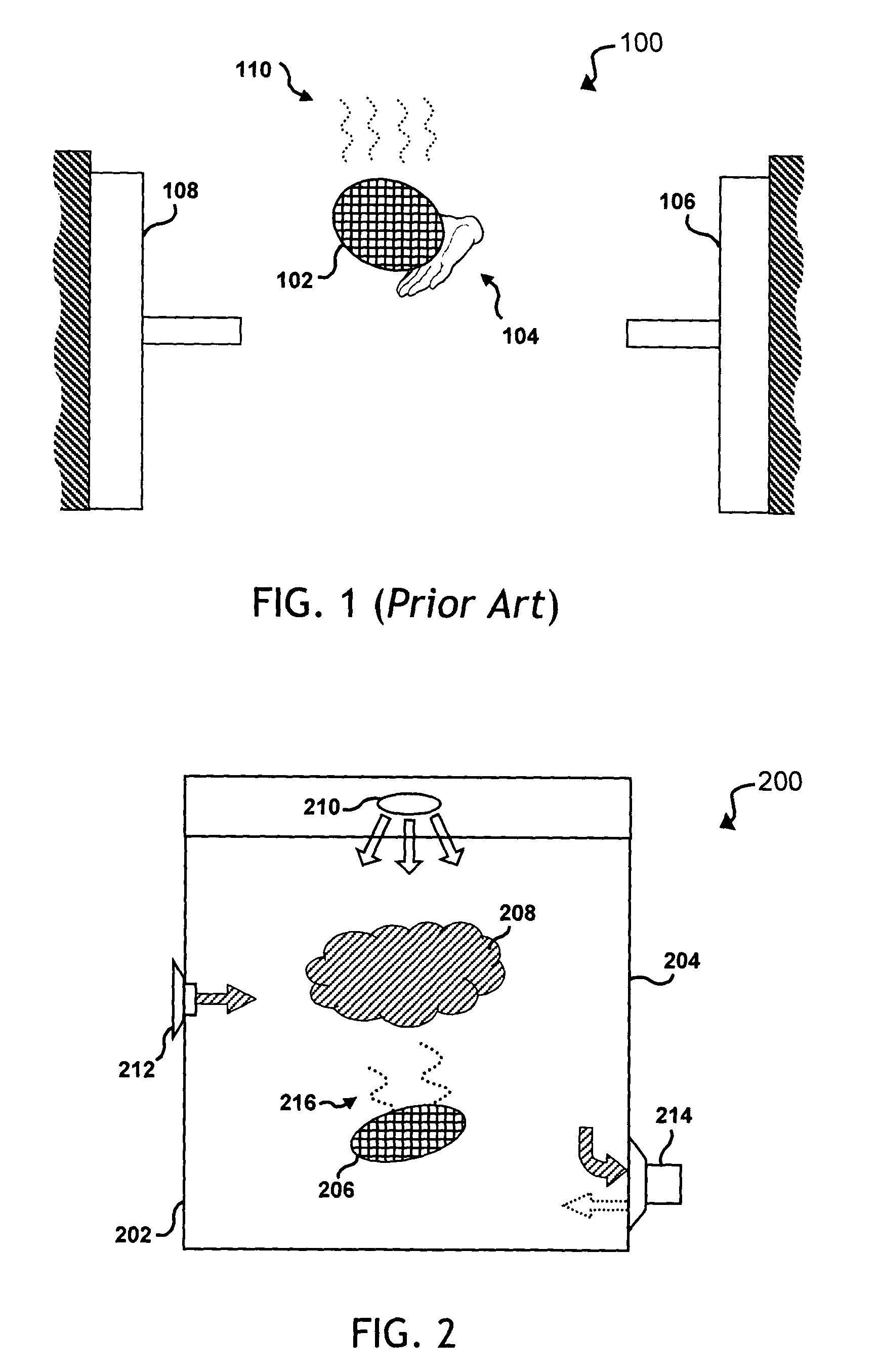System for ultraviolet atmospheric seed layer remediation
a seed layer and ultraviolet radiation technology, applied in the direction of cleaning process, semiconductor device details, semiconductor/solid-state device devices, etc., can solve the problems of copper being rather difficult to deposit directly on the dielectric via ecd, circuit generation generates numerous challenges to the semiconductor manufacturing process, and copper is very difficult to etch in most semiconductor process flows, etc., to achieve convenient, efficient and cost-effective
- Summary
- Abstract
- Description
- Claims
- Application Information
AI Technical Summary
Benefits of technology
Problems solved by technology
Method used
Image
Examples
Embodiment Construction
[0023]While the making and using of various embodiments of the present invention are discussed in detail below, it should be appreciated that the present invention provides many applicable inventive concepts, which can be embodied in a wide variety of specific contexts. The invention will now be described in conjunction with remediation of copper seed layers. The specific embodiments discussed herein are merely illustrative of specific ways to make and use the invention and do not limit the scope of the invention.
[0024]The present invention provides a system that remediates contaminants, and contaminant-based anomalies, from a seed layer surface in a non-destructive manner. The system of the present invention may be collocated, and even integrated, with other processing equipment (e.g., provided in situ within an ECD apparatus).
[0025]The present invention provides a remediation module. Handling systems or apparatus transfer a substrate, upon which a seed layer is already formed, int...
PUM
| Property | Measurement | Unit |
|---|---|---|
| density | aaaaa | aaaaa |
| semiconductor material properties | aaaaa | aaaaa |
| packing density | aaaaa | aaaaa |
Abstract
Description
Claims
Application Information
 Login to View More
Login to View More - R&D
- Intellectual Property
- Life Sciences
- Materials
- Tech Scout
- Unparalleled Data Quality
- Higher Quality Content
- 60% Fewer Hallucinations
Browse by: Latest US Patents, China's latest patents, Technical Efficacy Thesaurus, Application Domain, Technology Topic, Popular Technical Reports.
© 2025 PatSnap. All rights reserved.Legal|Privacy policy|Modern Slavery Act Transparency Statement|Sitemap|About US| Contact US: help@patsnap.com


